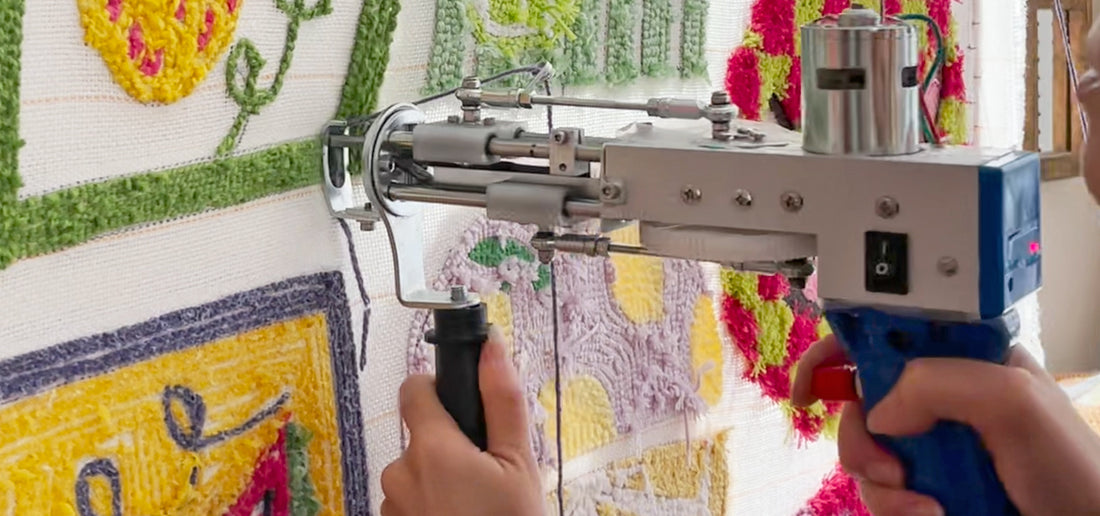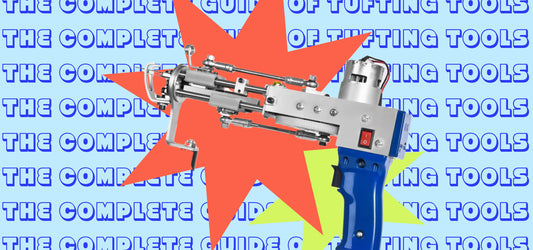The History of Tufting

Tufting is a method of textile making through which yarn is fed into a backing fabric to create a pattern. The textile technique dates back to 5 BCE with the creation of the world’s oldest piled rug. The method became mechanized in 1930 with the invention of the tufting gun.
What exactly is tufting?
Tufting is a method of textile creation. In this method, threads of yarn are pushed through the weaves of a foundation fabric to form the yarn piles that make a textile. Tufting can be done completely by hand or mechanically by hand with a tufting gun to make rugs, wall art, pillows, and many other forms of textile art.
History of Tufting
The practice of hand-tufting carpets has an incredibly rich history around the globe. The world's most ancient pile carpet, the Pazyryk Rug dates back to 5 BCE. In an astonishing testament to the rug's quality, it was discovered during a 1947 excavation in Siberia after being frozen in ice for 2,500 years.

In the many centuries since the Pazyryk Rug’s creation, rug making became an art form and trade that incorporated a wide variety of colors and styles. The practice spread throughout Asia and Europe and was largely impacted by personal prayer rug becoming a tradition of Islam.
The rug making process began to mechanize in the mid 1850s. From 1845-1851, Erastus B. Bigelow, an American, invented a power loom for the manufacture of Brussels and Wilton carpets. This invention was a stimulant to carpet manufacturing in Europe and the United States. The Brussels and Wilton style carpets dominated carpet production until the mid 1900s, when the manufacturing process for today’s tufted carpets was developed.
Introduction of the Tufting Gun

The mechanical tufting gun was invented in Dalton, Georgia in 1930.
A young woman named Catherine Evans Whitener created a hand-tufted bedspread for a wedding present. Demand for her bedspreads rapidly increased and soon entire families were hand-tufting spreads for 10 to 25 cents per spread – income that was instrumental in helping many families survive the depression.
In response to the demand for these bedspreads, the Glen Looper Foundry of Dalton introduced the first true tufting machine (tufting gun). Looper created the machine using the basic Singer single-needle sewing machine and adding a knife blade to cut the tufted yarn as it passed through the sheeting.

This invention, along with the creation of man-made fibers, dyes, and new spinning techniques drastically changed the carpet industry. In 1950, 10% of all carpet and rug products were tufted and 90% were woven. Today, over 90% of all carpet and rug products are tufted, less than 2%that are woven, and 6.7% are made via all other methods, such as knitted, braided, hooked, or needle punched.














